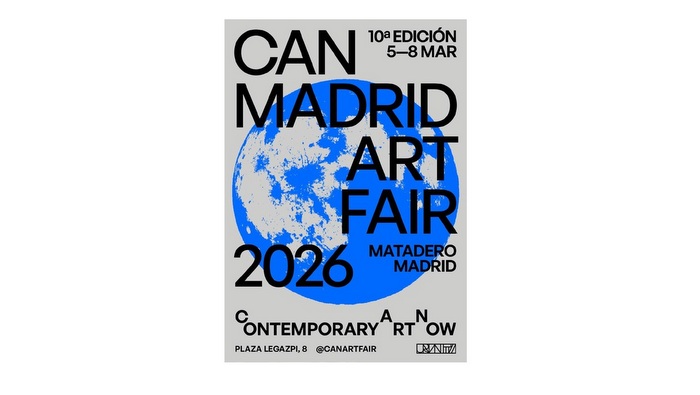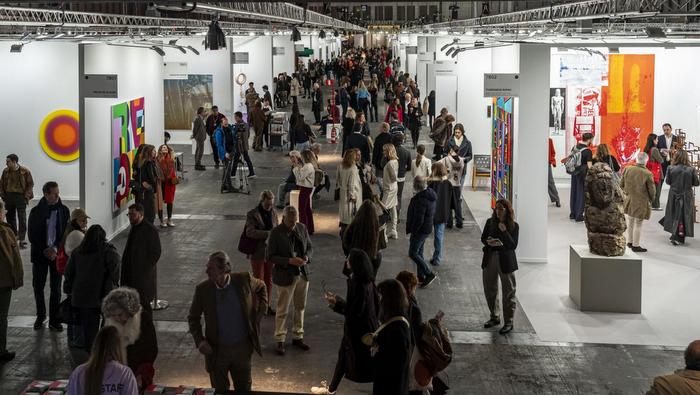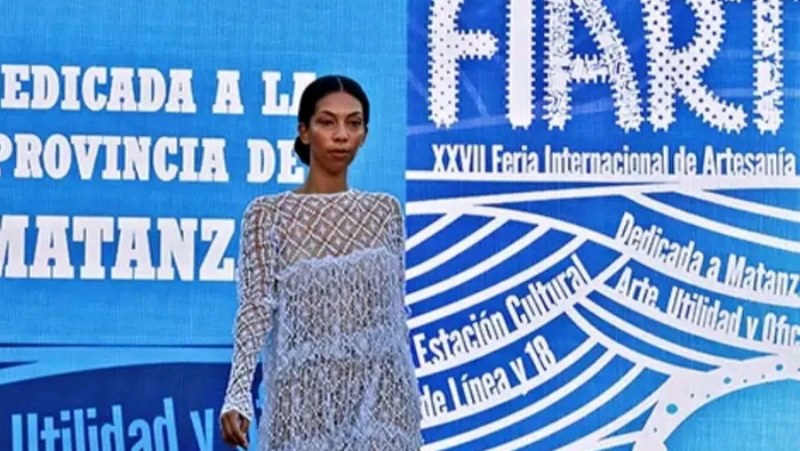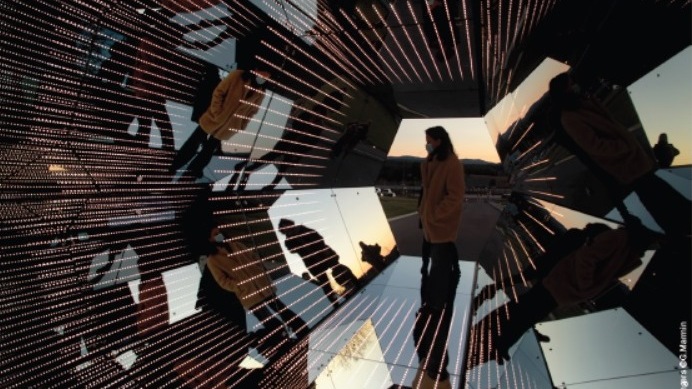Némo, the International Biennial of Digital Arts of the Île-de-France Region (Biennale Némo) is devoted to artistic creation “in the digital age” by using new technologies and questioning our all-digital society. Its fourth edition will take place from 9 October 2021 to 9 January 2022, in Paris and throughout the Île-de-France region.
This year, Biennale Némo is testing the ability of art and technology to reveal what is invisible, whether it be a natural, artistic, ecological or social phenomenon. The three-month event will be structured across three separate series: visual arts, arts and sciences, and performing arts. The visual arts series will kick off in October with BEYOND REALITY? – THE EXHIBITION at CENTQUATRE-PARIS, the main exhibition and core feature of Biennale Némo, which will run until early January.
BEYOND REALITY? – THE EXHIBITION proposes to reveal the invisible through digital art, science and technology. It does so by showcasing the work of around 30 artists throughout the various rooms of the CENTQUATRE-PARIS, which has been arranged into seven spaces themed around narratives – “The Wrathful Earth”, “You Are Not Invisible”, “Trackers/Tracked”, “Unnatural Natures”, “The Bureau of Expertise in Invisible Phenomena”, “How Many Angels Can Dance on the Head of a Pin?” – and a space devoted to the Forensic Architecture collective.
Featuring works by:
Forensic Architecture - Donatien Aubert - Léa Barbazanges - Stéphane Bissières - Tega Brain, Julian Oliver and Bengt Sjölén - Isamël Joffroy Chandoutis - COMMA (Clémence Choquet and Mickaël Gamio) - Geoffroy de Crécy - Daily tous les jours (Mouna Andraos and Melissa Mongiat) - Alexandra Daisy Ginsberg - Jean-Marie Delbes and Hatim El Hihi - Dries Depoorter - Heather Dewey-Hagborg, with Chelsea Manning – Paul Duncombe - Justine Emard - Luke Jerram - Fabien Léaustic – Stéfane Perraud and Aram Kebabdjian - Guillaume Marmin - David Munoz and Camille Sauer – Le NeoConsortium - Davide Quayola - Semiconductor - Stanza - Victoire Thierrée - Emmanuel Van der Auwera - Jeroen Van Loon - Benjamin Vedrenne - Richard Vijgen – Alan Warburton - Yuguang Zhang.
BEYOND REALITY? – THE EXHIBITION: 7 NARRATIVE SPACES
How Many Angels Can Dance on the Head of a Pin?
Halle Aubervilliers
It is very unlikely that we will all get to visit Mars, so instead we are bringing the planet to you at Halle Aubervilliers in the form of a work by Luke Jerram. It is accessed by passing through Passengers, a veritable time tunnel by Guillaume Marmin (and the Biennial’s very own “travelling work”, since it will also be displayed at ENS Paris-Saclay and on the esplanade at La Défense). The works of Richard Vijgen bring all that is invisible in the Halle and in the Paris sky into clear focus (multiple networks and waves, pollution, satellites, etc.) while, thanks to a work by Justine Emard, the entire system of lighting at the immense Halle will be brought into step with the predicted behaviour of a swarm of bees, as analysed by a machine-learning programme.
The Bureau of Expertise in Invisible Phenomena
Atelier 4
At the bureau of expertise in invisible phenomena, we enter into data like others enter into a religion. Here, artists are given free rein to map out a new reality. Alan Warburton, for example, uses a simple bunny rabbit to represent 35,000 hours of work carried out by ten employees of a computer services company.
Fabien Léaustic makes jellyfish and clouds out of his own DNA, while Heather Dewey-Hagborg presents us with all the possible faces of Chelsea Manning, generated using samples of her DNA. Using “artificial intelligence”, Alexandra Daisy Ginsberg revives the last male white rhino, which died in 2018. In real time, Benjamin Vedrenne feeds his printer with data from NASA in order to map the tiniest details of the surface of Mars. But how exactly does Yuguang Zhang bring the invisible man’s bed to life?
The Wrathful Earth
Atelier 0 and 2
While it is clearly too late to give back what belongs to the Earth, we can observe its discontent and rebellions, as well as its particular genius, in the work of the Semiconductor collective: in Earthworks, spectacular fluctuating marbled waveforms are animated by the soundscapes of seismic, volcanic, glacial and human (anthropic) activity. Where Shapes Come From allows us to visualise scientific interpretations of atomic phenomena, and to get a feel for the technologies that capture them. 20 Hz transports us into a geomagnetic storm in the Earth’s upper atmosphere.
Unnatural Natures
Atelier 6
Unnatural Natures casts a light on certain “ecological” aberrations related to geoengineering. Donatien Aubert’s cybernetic gardens – and, above all, their accompanying animated film – teach us about how cybernetics is taking hold, both in our digital-age lives and in a number of outlandish projects that aim to “save nature with new technology”.
Along similar lines, Tega Brain, Julian Oliver and Bengt Sjölén are presenting Asunder, a supercomputer that can generate an overall economic and environmental assessment of any region of the world, randomly selected every five minutes, before proposing a “solution” that may lead us quickly to conclude that the cure is in fact worse than the disease.
You Are Not Invisible
Atelier 1, 3, 5
Le NeoConsortium’s latest marvel of plastic engineering, Panoptic Moduloform
B, will be unveiled for the first time at Némo. Designed by the Plastic Safety Research Group, this “surveillance ready” work of art is entirely covered in mirrors to reflect the world 360 degrees and, no doubt, take the viewer off guard.
With The Nemesis Machine, a sprawling installation by Stanza, we witness how a metropolis becomes a megalopolis, and then an ecumenopolis – a powerful, global technological system that is all-encompassing and all-seeing; a veritable dystopian cyberpunk nightmare. We can only advise you to keep tabs on your personal data during your visit…
The mood is lightened somewhat by the Daily Tous les Jours collective: their work I Heard There Was a Secret Chord invites visitors to hum Leonard Cohen’s sublime ‘Hallelujah’ accompanied by a choir made up of as many voices as there are internet users listening to the song on streaming platforms at that very moment.
Forensic Architecture
Atelier 7
You may not be invisible to corporations and governments, but nor are they to you, thanks to the work of the activists and researchers at Forensic Architecture, based at Goldsmiths, University of London. Their investigations employ pioneering techniques in spatial and architectural analysis, digital modelling and immersive technologies. Findings from their investigations have been presented in national and international courtrooms, citizen’s tribunals and community assemblies, as well as exhibitions at some of the world’s leading cultural institutions.
The four films presented here offer a glimpse into their immense body of work and the complementary technologies they wield. The works explore two bombings of civilians, an assassination in the street, and evidence of the incredible negligence that caused the explosion at the Port of Beirut last year.
Trackers / Tracked
Galerie Éphémère
Following her magnificent 2018 work Birds of Prey, film-maker Victoire Thierrée presents Sans lune, in which she takes us into the forest on an extraordinary adventure alongside a group of soldiers equipped with an arsenal of new tracking technologies.
Ismaël Joffroy Chandoutis, who won wide acclaim for his short films Swatted and Maalbeek, lends a voice to the ghosts of society: people intolerant to electromagnetic fields, who attempt to survive in an ultra-connected world where these waves are nearly impossible to avoid.
Publicaciones relacionadas

UVNT es ahora Can Art Fair Madrid
Diciembre 23, 2025
ARCOmadrid anuncia las galerías participantes en su 45ª edición
Diciembre 17, 2025















